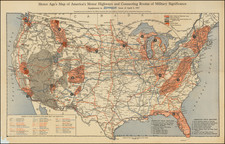Rare map of the United States, issued by the Treasury Department, showing the Railroad Lines then in existence and emphasizing the location of Gold, Silver and Coal Mining Regions in the United States and Canada, along with Cotton Region of Utah.
This map may be the first map to identify the Gold Regions near the Black Hills (see below).
The map shows alternate railroad routes to the Pacific, including those under construction and proposed. Wyoming is still part of Dakota, and Arizona owns the southern portion of Nevada. Each state and territory is shown with major towns, railroads, populations and area in acres. Resources are located including gold in Arizona, Montana, and the Black Hills in a large Dakota Territory. Silver regions are mentioned in Arizona and Nevada. In Utah, Fillmore City is the capital and has a Cotton Region nearby.
Extensive note beneath the title discusses railroads and reads, in part, "the North Mexican line from Austin in Texas to Guaymas in Sonora, is quite conjectural - a possibility of future social and political changes." An interesting map that was published by the Treasury Department and printed by Bowen & Co.
The map may be the the first map to label the Gold Fields of the Black Hills. By 1864, many people, including in the U.S. government, were aware of the presence of gold in the Black Hills, however, for some time the region remained too dangerous due to tensions with the Sioux Nation for the gold to be exploited. Reports show that as early as 1849, the Sioux Indians exhibited specimens of Black Hills gold to trappers and hunters. In 1852, a group of men on their way to California found gold in the region, but they were killed by Natives shortly thereafter.
From 1855 to 1859, there were 3 government expeditions to the region (Harney, Warren and Hayden), and it is likely that they reported some knowledge of gold finds to the government. Father De Smet was apprised of gold finds in the region at least as early as 1862, and word of this discovery would certainly have reached Washington by 1864. In
History of Dakota Territory, Volume 1 (George Washington Kingsbury), Kingsbury details several letters and reports which discuss the discovery of Gold in the Black Hills in 1864.
Curiously, the discovery managed to remain relatively suppressed until George Custers's expedition to the region in 1874, in large part due to the US Government's agreement with the Sioux Indians not to allow settlement in the region. We can locate no map with an earlier reference to the Dakota Gold Regions.









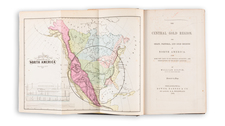
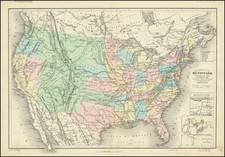
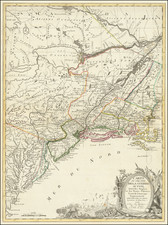
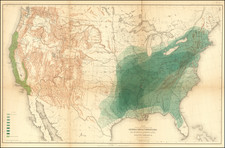
![United States [rare variant edition]](https://storage.googleapis.com/raremaps/img/small/83279.jpg)
